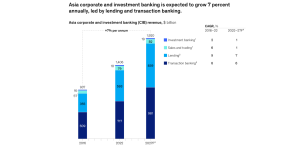Online invoicing lets businesses email invoices with built-in payment options directly to customers. Compared with paper invoices or emailed PDFs, online invoices are easier to track and help companies get paid more quickly. While you’ll need to get set up with software that supports online invoicing, switching to a digital solution is usually easy. Here’s what you need to know about online invoicing.
Nerdy tip: Online invoicing is sometimes referred to as digital or electronic invoicing.
How does online invoicing work?
Online invoicing is a similar process to paper invoicing in that you send customers the same information but in a digital format.
You can use online invoicing software, such as Zoho, Hiveage or Invoice Ninja, to select a template and add the billing information. Once you generate the invoice, the software notifies the customer by email. The customer can view the invoice immediately and pay digitally on the spot if you’ve enabled online payments.
Online invoicing also streamlines aspects of the billing process for you. Some systems track invoices and can tell you when a customer has viewed an invoice and even send reminders when the due date gets close. You can also sort paid and unpaid invoices. Plus, many invoicing systems allow you to set up recurring billing, so you don’t have to worry about initiating new invoices for repeating services.
Invoicing is often a common feature of popular accounting software services, such as FreshBooks and Wave, as well as an additional feature of payment processing and point-of-sale options, like Square.
Pros of online invoicing
Online invoicing creates a number of benefits for small businesses, including:
-
Immediate customer receipt. Customers receive online invoices immediately and can pay just as quickly, cutting out the delivery time of nondigital methods.
-
Faster payments. Adding a link in an invoice to pay it online is not only convenient for customers, but also good for your business’s cash flow.
-
Streamlined accounting records. Many software options for online invoicing integrate with accounting programs and consolidate record-keeping into one location.
-
Saved time. You’ll spend less time tracking which invoices are paid, prepping new ones and mailing them to customers.
Cons of online invoicing
There are a few disadvantages to using online invoicing, which include:
-
Some invoicing software or features require a monthly fee. Not all options are free and might require a small investment on your part, depending on which one you choose.
-
Spam filters can hide invoices. Sending invoices by email means a customer’s inbox could tag them as spam, so you might still have to call a few customers who are unaware they have an invoice waiting.
-
Email can be hacked. Privacy might be compromised if a customer’s email is hacked, which is much less likely if an invoice is mailed.
-
Some customers might not like digital formats. You’re likely to have at least a few customers who aren’t tech savvy and want good old-fashioned paper invoices.
Online invoicing recommendations
Zoho Invoice
With no monthly fee, Zoho Invoice is a great invoicing option for small businesses. You can customize invoices to match your brand with up to 17 languages for multilingual customers, get alerts when customers view invoices and set up recurring invoices for regular billing.
FreshBooks
If you’re looking to integrate online invoicing into other financial applications like accounting software, FreshBooks is a good option. Small businesses can customize their invoice design, remind customers to avoid late payments and structure invoices to get deposits on projects. FreshBooks doesn’t have a free plan, but its tiered pricing plans start on the cheaper end at $15 a month and grow with your business.
Wave
Another free option that’s great for freelancers is Wave, which lets small businesses combine invoicing and accounting into one platform. It automatically syncs invoicing and payment info with its accounting software, saving you time and keeping your records up to date. You can also set up recurring billing with customer reminders and get notified when invoices are paid to keep on top of cash flow.
This post was originally published on Nerd Wallet






